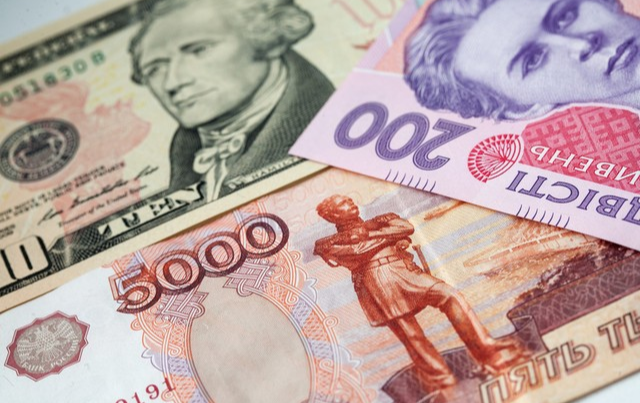US Weighs Sanctions on Chinese Banks
Advertisements
The ongoing financial conflict between China and the United States has evolved into a multifaceted issue that goes far beyond simple economic disagreements. This tension, which has been palpable over the past few years, is often misunderstood by those who believe that negotiations and concessions from China could lead to a resolution. However, this perspective overlooks the deep-rooted complexities and historical context behind the tensions.
At its core, the US views the substantial trade surplus achieved by China with a lens of loss. The American narrative suggests that this surplus equates to a transfer of wealth from the US to China, thereby contributing to a mounting national debt that is wielding unforeseen challenges on the US economy. Stemming from the interactions of both nations, this discourse not only highlights economic disparities but taps into broader themes of geopolitical rivalry and national identity.
In the past few years, the US has attempted various strategies to alter its trade dynamics with China. Efforts such as trade wars, imposing tariffs, and economic sanctions have emerged as primary strategies to constrain China’s economic ascent. Despite these aggressive maneuvers, questions loom large: Can these tactics effectively alter the entrenched trade imbalance? And what further steps might the US consider?
The terms of trade are ultimately shaped by market realities and demand. The US has traditionally occupied the role of a consumer-driven economy that simultaneously serves as a currency-exporting power. In contrast, China's evolution since its accession to the World Trade Organization (WTO) has forged its identity as a global manufacturing hub, transitioning from producing basic textiles to mastering high-end manufacturing.
China's ascent marks a significant shift in the global economic landscape. Once a nation grappling with foreign exchange challenges, it now boasts the largest foreign exchange reserves worldwide. However, the US economy entered a precarious phase around 2018, characterized by fiscal deficits, with government revenues falling short of expenditures. As a result, the US increasingly leaned on accumulating national debt, raising the debt ceiling amidst growing trepidations about long-term sustainability.
This financial predicament has prompted the US government to align with certain vested interests within its territory, leading to a reign of trade and technological conflict directed at China. Manufacturing jobs seeped away from the US to other regions, particularly to Asia, where China emerged as the largest benefactor of this migration. Implicit in this trend lies the fear that the increasing prosperity of the Chinese populace may inversely impact the living standards of average Americans.

Over the past six years, the trade and financial battles between these two giants have persisted with little change in their fundamental trade relationship. Surprisingly, even amidst the turbulence, the trade surplus enjoyed by China has further widened. This scenario has sparked a sense of urgency within China to recalibrate its economic strategy. Responding to external pressures, it has hastened the rollout of initiatives like the Belt and Road Initiative, aiming to diversify its trade partners beyond reliance on any single country.
Moreover, China’s internal market has taken precedence, with an acute focus on stimulating domestic demand, consequently reducing its dependence on foreign markets. Such an approach is reflected in the establishment of a dual-circulation economic model that prioritizes domestic consumption alongside international trade.
In this context, the efficacy of the US's trade war strategy appears increasingly questionable. Recent comments from US Treasury Secretary Janet Yellen suggest further possible sanctions against China, specifically regarding its banking sector, fueled by the context of Ukraine and the broader geopolitical landscape. Nevertheless, it's crucial to acknowledge that previous sanctions aimed at China's banks have been conducted discreetly, influenced by the burgeoning trade relations China has cultivated with Russia.
Repercussions from these financial sanctions typically reverberate globally, often resulting in counterproductive outcomes. The series of sanctions leveled against Russia's financial institutions post-2022 have prompted central banks worldwide to reassess their reliance on the US dollar, leading to a conscious effort to diversify their reserves and accumulate gold to mitigate against potential US-imposed financial risks.
This newfound sentiment of caution raises a vital question: If the US can sanction Russia under the guise of national interest, might it not someday enact similar measures against allies under dubious pretenses? Such anxieties have unleashed a wave of gold purchases across emerging markets, spearheaded by countries such as China and India, marking an unprecedented expansion in their gold reserves.
Each contemplated measure taken by the US against China's banking system could, paradoxically, intensify distrust in the US dollar as a global currency. Such erosion of confidence may lead to a further decline of the dollar’s dominance in international transactions while boosting gold prices significantly—a scenario that would disincentivize the US from pursuing such aggressive sanctions lightly.
In conclusion, the multifaceted nature of the financial conflict between the US and China illustrates how deeply interconnected the global economic system is and how unilateral actions can have far-reaching consequences. As the situation unfolds, all eyes will be on how both nations navigate this turbulent landscape filled with intense scrutiny and rising nationalism. The stakes are exceptionally high, not just for China and the US, but for the entire world economy that dances delicately on the threads of international trade politics.
Write A Review